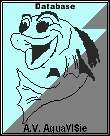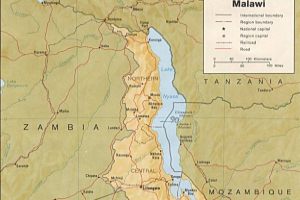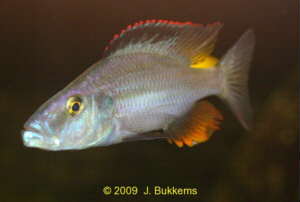 |
Dimidiochromis compressiceps |
 |
||||||||||||||||||||||
|
|
|
|
||||||||||||||||||||||
| Explanation of the symbols | ||||||||||||||||||||||||
|
|
|
|||||||||||||||||||||||
|
|
||||||||||||||||||||||||
|
||||||||||||||||||||||||
|
This fish is a real predator. You cannot keep him
together with small fish because he will eat them. You
should keep them in a large aquarium with a thick sandy
substrate. The aquarium should be set up with stones
that form caves and hiding places and on the sides densely
planted with Vallisneria. He hides between Vallisneria
waiting for his prey. It is also a hiding place for
females with their young. He is called the Malawi eye
biter but experiments have proved other predatory fish bite
eyes too. You should keep one male together with
several females.
You should give them live food such as small fishes, waterinsects and Artemia. They eat algae as well. Breeding is not difficult. The eggs are laid in a pit. After that the female immediately takes the eggs in the mouth. They are fertilized by the male using the dummy egg method. When the eggs are hatched, the young fishes stay in the mouth of the mother for 10 days. After that they are left alone. |
||||||||||||||||||||||||
|
|
||||||||||||||||||||||||
|
Jan Bukkems |
||||||||||||||||||||||||
 |
||||||||||||||||||||||||
|
Copyright ©AV AquaVISie. All rights reserved. |
||||||||||||||||||||||||
